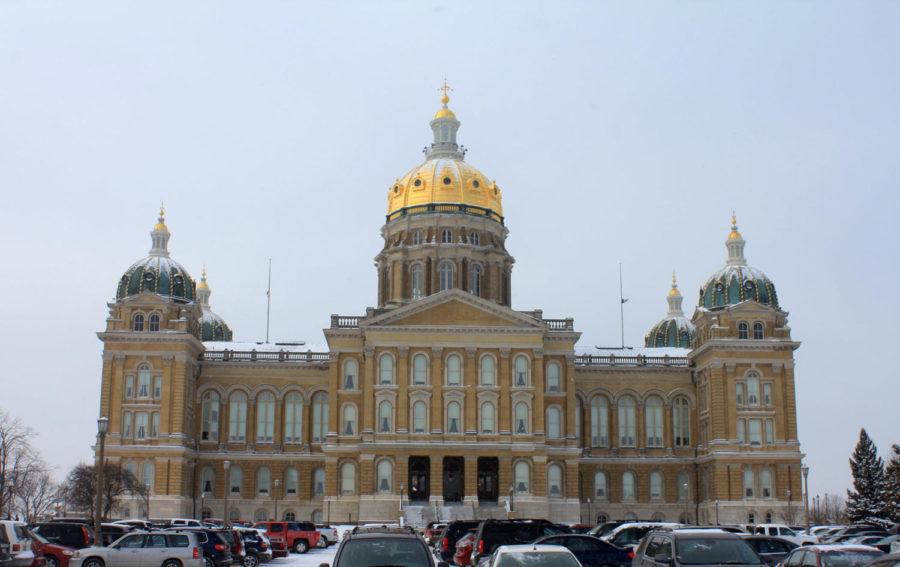Undergraduates showcase research projects at annual Research in the Capitol ceremony
April 13, 2014
From microbiology and genetics to dairy science and global resource systems, a broad range of research topics were presented by undergraduate students at the capitol building in Des Moines.
Student’s were selected from Iowa State, the University of Northern Iowa and the University of Iowa to have the opportunity to present their research to the Iowa legislature at the annual Research in the Capitol event.
Twenty-one ISU undergraduate students applied and were accepted to attend the event. The students were able to present their research to the legislature, the public, news reporters and other students at the Capitol. The Research in the Capitol event was from 11 a.m. to 1:30 p.m. on April 1.
This was the ninth time Iowa State students have participated in Research in the Capitol. Similar academic events happen throughout the country to showcase student research to their state’s legislature. Most of the students presented posters to anyone who thought their research topic was interesting.
This year, Meghan Blancas, university honors graduate assistant, coordinated the event for Iowa State students. She selected the participants, coordinated the students and their research with other schools and was in contact with the students to answer any of their questions about the event.
This was Blancas’ second year coordinating the event under the supervision of Dana Schumacher, assistant director of the university Honors Program. Part of Schumacher’s job includes promoting research across the institutions for all undergraduates.
Schumacher said about 30 people applied to present at the Capitol. They filled out a proposal describing what their research was about, the methodology they used, their results and what the implications of those results are.
“We want to present what the university looks like,” Schumacher said. “We look for a broad range of subject matter.”
The coordinators also want to present research that the legislators will find interesting. Schumacher said that a few years ago they brought students who had done research on flooding, because they knew the legislators would find that topic relevant and would want to learn more about the research.
“We are looking at the big picture of what Iowa State looks like, and what the research at Iowa State looks like,” Schumacher said.
Nicholas Benge, senior in biology, presented research that he has been working on with his mentor about carbon concentrating mechanisms and algae. Specifically they have been researching a protein called HLA3.
Benge said that a lot of research was presented to legislators, but most of the presentations were given to other students. The undergraduates set up their displays so as people walked by to look at the posters, they could stop at the ones they thought were the most interesting.
Whitney Briggs, senior in animal ecology with a microbiology minor, presented her research on characterizing the genetic diversity and similarity between rural and urban white tail deer populations in Iowa. She has been working on her research with her Ph.D. mentor and her academic adviser for more than two years.
“I had never really been able to interact with very many people outside of my department and it was great getting to see the kind of research experiences that were going on in other departments and other schools,” Briggs said.
Schumacher described the goals of Research in the Capitol in three parts: showcasing undergraduate research at the public institutions to the legislature and the public, being able to see what work is being done at other institutions and the experience of presenting their research.
“There is a whole cycle of doing research,” Schumacher said. “Presentation is a concluding part that kind of leads a person to the next step of their research.”







